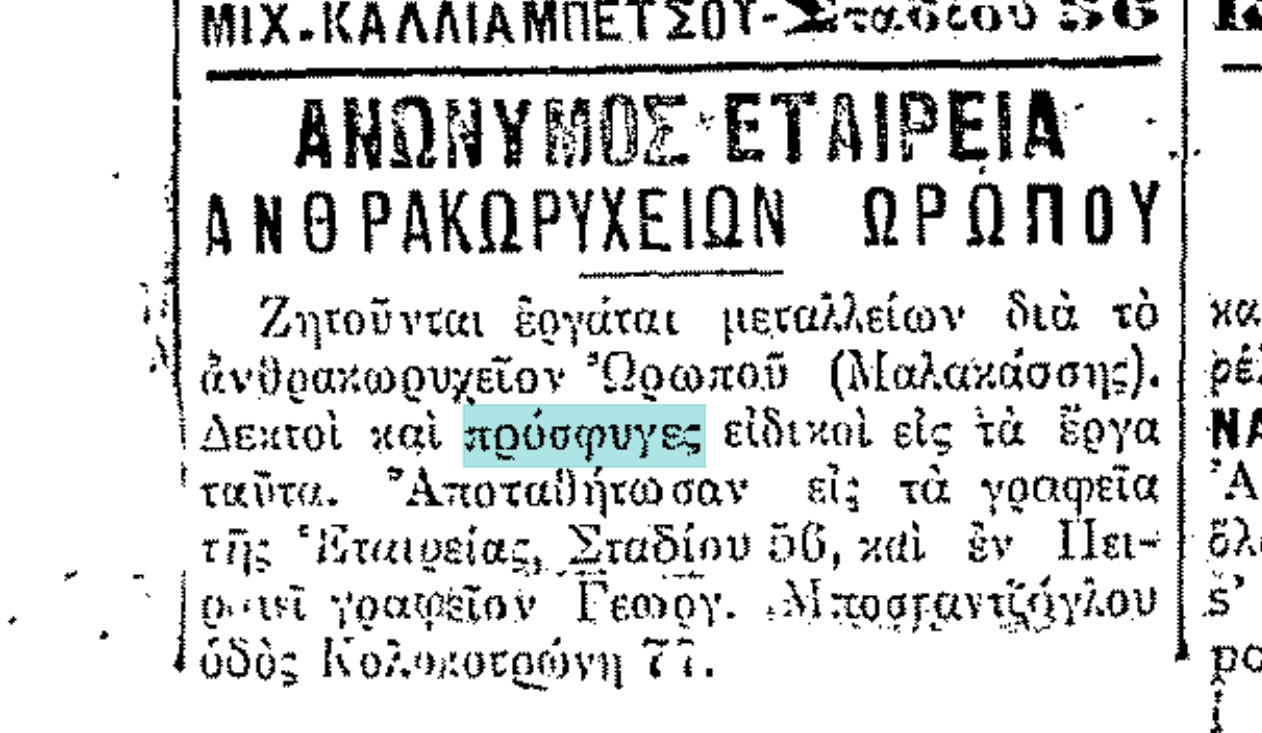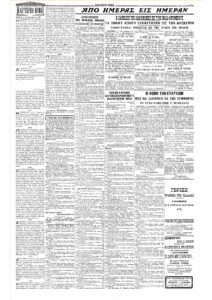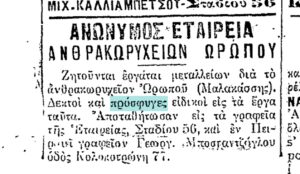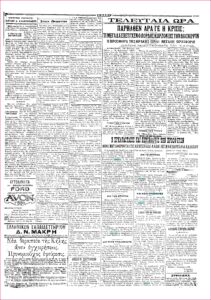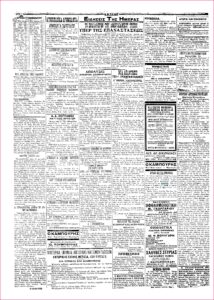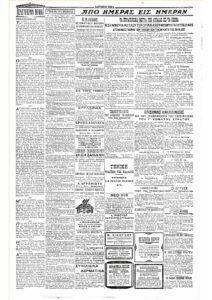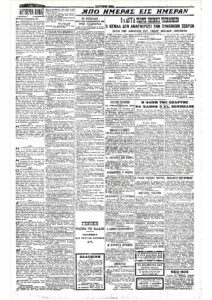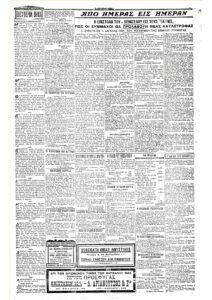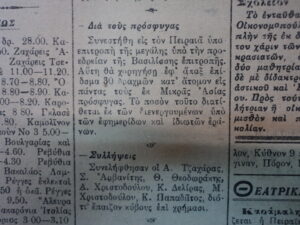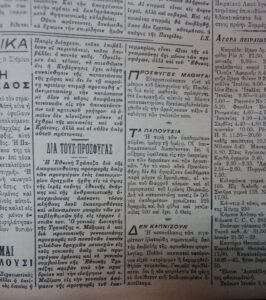September 1922: state aid and private support
City
Migration Period
Tag
Category
Full Description
In the first days after the refugees’ arrival, the Queen and the Ministry of Welfare organised the first attempts at providing state aid by launching a panhellenic fundraising campaign and setting up employment offices. The goal of the campaign was to raise funds that would go towards housing and providing food to the destitute refugees, but would also finance the distribution of a lump sum of 30 drachmas to each refugee. According to the newspapers of the time, which lavished these efforts with excessive publicity, the organisers endeavoured for the entire country to actively participate in the fundraiser. Professional unions and trade associations were recruited to contribute by informing and mobilising their members. Archbishops, prefects, police commissioners and other administration officials guaranteed the integrity of the proceedings, while the entire process was supervised by the Palace (Empros, 6.9.1922, p. 2). In its next issue, the newspaper Empros [Forward] had already published the sum raised by its editors and employees which amounted to more than 4,000 drachmas. In the same issue, the principal of the Tripoli Academy published his intention to offer a refugee family 300 drachmas a month (Empros, 7.9.1922, p.1). On September 9, the National Bank announced through its general manager that it was donating 1,000,000 drachmas towards refugee relief (Chronografos, 9.9.1922). Over the following days, more sums donated by businesses and private citizens were publicised in the newspapers. By September 5, the newspaper Elefthero Vima [The Free Tribune] had raised 127,703 drachmas (Elefthero Vima, 6.9.1922, p. 1). In Piraeus, as in other cities that were receiving large refugee inflows, a subcommittee of the ‘central committee chaired by the Queen’ was established in order to oversee the fundraising process and the collection of the funds (Chronografos, 8.9.1922).
Simultaneously, ten employment offices started operating on September 9. The Royal Decree ‘On the establishment of employment offices’ was signed on September 22, 1922, and was published in the Government Gazette the following day. The Piraeus branch was housed in the offices of the Patriotic Union of Greek Women. According to the Minister of Welfare, Spyros Giannopoulos, these employment offices would compile lists of the refugees, men and women, including their name, origin and profession. Using these lists, they would then proceed to look for suitable employment for the applicants. From September 27 to December 31, 1922, the employment offices helped 1,028 men and 1,095 women find work. More specifically, 1,028 men found employment ‘out of 2,406 men applying for 910 offered positions’; for the women, 858 were hired ‘out of 1,518 applicants for 915 positions’ and 237 maids found work out of the 1,141 that applied (Mitzalis 2008:142).
Professional associations, such as the Editors’ Union, the Bookmakers’ Union and the Panhellenic Musician Union, invited their refugee colleagues to union assemblies to help them find employment. By the second half of September, most local and national newspapers had added a ‘Refugee Column’, where the refugees could publish ads looking for work and businesses could offer work to refugees. Workers and craftsmen, tutors and foreign language speakers, typists and accountants, all sought temporary or permanent employment in order to secure the money necessary for their survival. These ads seeking or offering employment indicate the pressing need for work among the refugee population and highlight how the refugees developed their own, individual strategies in their fight for survival. At the same time, some refugees resorted to even more improvised solutions to get by. ‘The streets filled with the carts of refugee travelling vendors trying to make a living by selling sundry items. Menders set up their stools and stalls on the most upscale streets’ (Morgenthau 1994: 93).
Nevertheless, browsing through the local newspapers of the time reveals that everyday life in Athens and Piraeus was not entirely upended. Social events, theatre performances and sports events continued taking place, donating part of their proceeds to refugee relief. It is likely that the long time scale of the refugee inflow and the wide scope of the refugees’ needs allowed the refugee tragedy to co-exist with the Athenians’ everyday life, which remained largely unimpeded. In this new era of conflicting realities, there were refugees who were desperately looking for their families and refugees who were continuing their university studies; there were Athenians who offered 10 refugee young women the opportunity to learn how to type and get employment, while stores offered a 10% discount ‘on the retail prices of hats’ to refugees.
Bibliography
Empros, 6.9.1922, p. 2, 7.9.1922, p. 1, 14.9.1922 and 1.10.1922
Eleftheron Vima, 6.9.1922, p. 3, 13.9.1922, p.3 and 21.9.1922, p. 3
Chronografos, 8.9.1922 and 9.9.1922
Nikolas Mitzalis, Housing production and urban space during the Interwar, Athens 2008.
Henry Morgenthau, My mission to Athens, Trochalia publications, Athens 1994.
